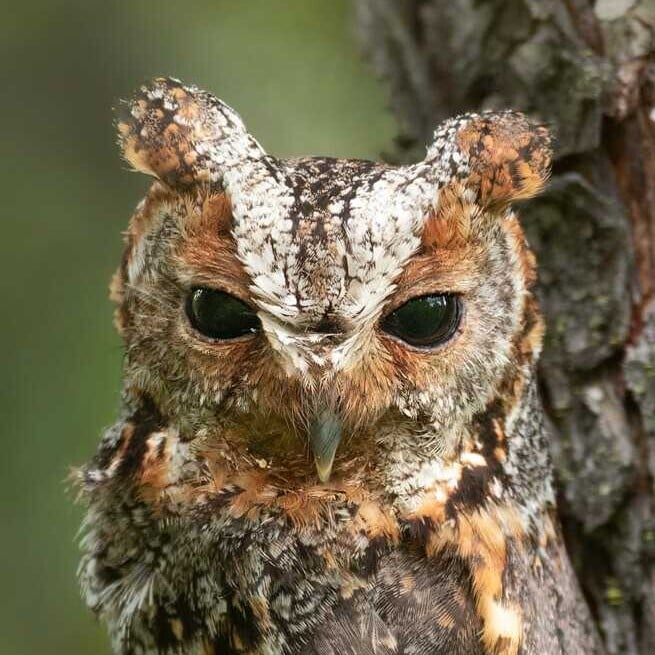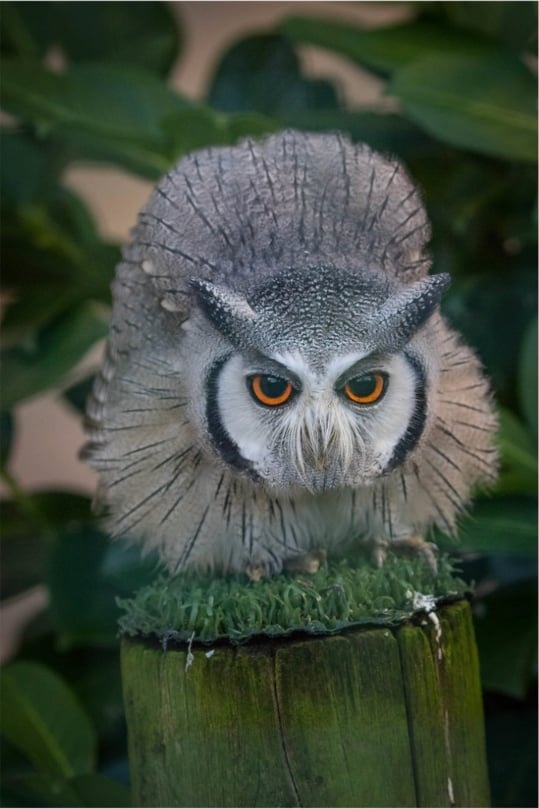Photo by John Hoang
A Burrow Owl makes hunting look easy.
There’s a lot of things in this photo to comment on, so let’s get something going on here. You’ve all been too quiet lately!
Somehow I never realized owls eat bugs. I guess all the owl pellets I dissected lied to me
Before I started doing all these posts, I just thought owls are rats, mice, moles, and voles, and that was about it.
Now I know they eat just about anything made of meat. Butterflies, worms, frogs, fish, snakes, bats, birds, other owls, skunks, porcupines, and occasionally carrion of deer or wild pigs. The amount of snakes I’ve seen Mr Owl bring back to the nest on the Hilton Head RaptorCAM has been crazy!
Most pellets I see for sale are labeled as Barn Owl, so that’s going to have more rodent and mammal bits.
Pellets are wonderful sources of data. They not only tell us about the owls, but about all those prey animals. Many prehistoric species have been discovered thanks to owls. By roosting in places like caves and coughing up those pellets in there for tens of thousands of years, owls have left behind an amazing cache of animal history!
I never thought about this! So interesting to think of owls contributing to the fossil record (ish) through pellets.
I was listening to something recently about early humans, and the program was saying we originally thought “cavemen” lived in caves, but it’s moreso they were originally just the easiest places to find human remains (people and they’re stuff) as they preserved things so well.
One of the things that makes owls particularly good at this is that they tend to have a favorite spot to drop their pellet every day, so they tend to leave a bunch in the same place. Find that place, and you’re set!
So early humans did use caves for shelter. They didn’t go very deep, and it wasn’t everywhere, but places that have cave paintings those were shelters used.
They were kind of temporary, though, since they followed the food as hunter gatherers.
But yeah, there’s a disproportionate amount of stuff found in caves because of how well they’re preserved.
For sure! Just like now, we live pretty much anywhere we can find something to eat.
The cave is not mandatory. 😄
Just wanted to touch on a stereotype of our ancestors.
Also no evidence of Neanderthals being dumb, it’s just the first guy to identify one felt they looked dumb… 😵💫
they were making tools, probably as smart as we are. just a much lower technological head start.
and there’s probably a fair bit of neanderthal DNA floating in the human genome. (its a bit… misleading to say europeans have 1-2%; there would have been substantial overlap)
Word!
Does anyone know what kind of beetle that is? Other than a lunch beetle.
I have this post from before where the photographer called it a June bug, but someone else got very defensive that it was actually a figeater beetle. That looks similar to this, so check out those 2 first.
somebody is showing off for the camera.
what a prima donna
We need an even fancier owl doing a single leg no-look grab!
That’ll put it in its place!
Toss in a goofy foot 180, and they’d go pro in the Owl Games
Now I want a compilation video of owl stunts set to a killer soundtrack!
Trying to figure out a way to get that, lol
I wonder if we could set up some kind of obstacle course thing for them to catch a snack on. Then, Narrate it something like this
Maybe get the owl centers in on it. Fundraising for them, fun…. For us. Snacks for the Owls.
Do it! 😁
Winter or summer Owlympics?
I was thinking winter
xowl games. But we could do summer owlgames.
Would’ve expected the owl to be hunting at night (?)
Burrowing Owls are active during the day, unlike most owls, believe it or not!
https://www.fws.gov/species/burrowing-owl-athene-cunicularia
Well owl be damned
I believe!!
I don’t!
That’s like a blessed owl who is giving thanks for its meal.

Why’d this make me wonder whether owl tastes like chicken
I doubt it does, since they have very different diets.
William and Francis Buckland: The Father and Son Who Ate Every Animal Possible William and Francis Buckland saw Noah’s Ark as a dinner menu.
William entertained guests at his home and the college with exotic meals of things like hedgehogs, roast ostrich, porpoise, crocodile steaks and even cooked puppies.
When Buckland was visiting an Italian cathedra some time between 1826 and 1836, a priest told him the slick floor was due to the miraculously ever-flowing blood of sacrificed martyrs; he knelt, ran his tongue across the ground, and declared the liquid to be bat urine.
Most notably, William allegedly ingested the 140ish-year-old mummified heart belonging to King Louis XIV of France. The heart had been stolen during the French Revolution until William’s friend, Lord Harcourt, somehow acquired it. When Harcourt withdrew the heart from a silver snuffbox, William quickly popped it in his mouth.
Mmmmm!!!
Tonight’s dinner special, mummified heart of royal with a side of cooked puppies. Quench your thirst with our finest bat urine.
While a young professor at Oxford, he was hard-pressed for money so he amped up his eccentricities in lectures to attract fee-paying students with racy jokes and profanity.
There appears to be no clear incident or time period when William started taking a fork and knife through the animal kingdom, but it could have been his doubling-down on eccentric behavior for widespread notoriety.
When people wonder what attention whores did before social media and YouTube, this is it.
I wanna see a no-scope 360 catch now. Great pic though.
Edit: I once lost a Burrow owl. Looked all over in the trees. Couldn’t find it.
Stuart, I warned you they were doing things to the soil. Now the trees are full of burrow owls!

Landing strips for owls I guess.





